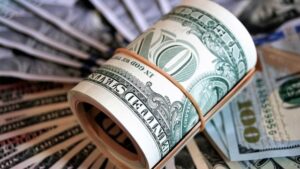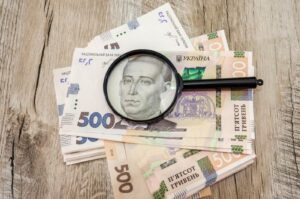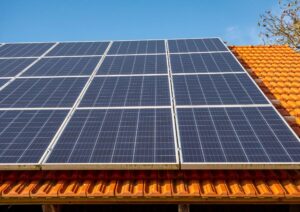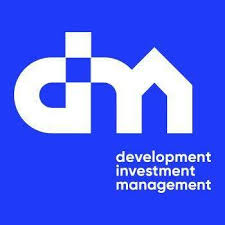
The general meeting of shareholders of Globus Bank (Kyiv) has decided to dismiss the Chairman of the Supervisory Board Dmytro Polkovskyy and elect one of the independent members of the Board – Dilara Mustafayeva. According to the bank’s message in the information disclosure system of the National Commission on Securities and Stock Market (NCSSM), the relevant decision was made at the general meeting of shareholders, held on October 30, in accordance with the application submitted by Polkovskiy.
The decision to change the head of the nabsoyet came into force on November 3.
Polkovsky had been the head of the nabsovet since March 2016 and owns 16.2% of the bank’s authorized capital.
Mustafayeva was elected chairman of the supervisory board for a term from October 31, 2025 to April 30, 2026. She became a member of the board in February 2019. Mustafayeva has been the director of the banking market analysis department of Financial Pulse Public Association since April 2015 and the director of the municipal department of IBI rating agency since February 2020 (part-time).
Globus Bank was registered in 2007, the regional network has 30 branches.
According to the National Bank, as of August 18, 2025, the shareholders of the bank were Elena Silnyagina (50.5%), Dmitry Polkovsky (16.2%), Sergey Mamedov (10.5%), Evgeny Varyagin (9.9%), Bakhtari Hedayatollah (9.89967%), Taras Lesovoy (3%) and Andrey Pinchuk (0.00033%), who own the authorized capital indirectly.
As of September 1, 2025, with total assets of UAH 14.98 billion, the bank ranked 25th among 60 banks in Ukraine.

Analysts of the currency exchange market operator KIT Group together with their colleagues from Globus Bank and Unex Bank (both in Kiev) agree that the average annual exchange rate in 2025 will be close to UAH 45/$1, which corresponds to the figure included in the state budget for the next year.
“The most probable scenario is close to the government forecast, which is reflected in the state budget-2025, the average annual rate of 45 UAH/$1, which allows its fluctuations during the year in the range of 44-46 UAH/$1 with gravitation to a higher mark before the end of the year – so far we have no reason to underestimate the risks of further long-term devaluation”, – said in ‘KIT Group’ at the request of the agency ‘Interfax-Ukraine’.
Experts expect the official exchange rate to weaken to 42.2-42.5 UAH/$1 by the end of this year. They point out that the forecast for the beginning of 2025 depends on macroeconomic factors, in particular on further dynamics of international support, monetary policy of the US Federal Reserve System (FRS) and exchange rate parity in the international markets of the US dollar and euro.
“In the case of stable receipt of financial support from partners and allies and subject to low volatility of external markets, the hryvnia exchange rate will be relatively predictable, although it will hold further devaluation fairway,” analysts emphasize.
In turn, the head of the board of Globus Bank Sergey Mamedov notes that in forecasts of the official exchange rate for the next year, he also predominantly relies on the budgeted figure of 45 UAH/$1.
“We understand that the value of the dollar may depend on a number of factors and circumstances, among which we can highlight the amount of international financial support, which is directed to cover the budget “gap” between expenditures and revenues,” he explains.
Among the important factors affecting the exchange rate dynamics, the banker named GDP growth rate, inflation rate and military actions, which can create pressure on the currency market, prompting more active purchase of foreign currency both in the non-cash and cash markets.
“We cannot rule out that the forecast may not fully come true. However, the weighted average exchange rate of UAH 45/$1 is already a benchmark on which businesses rely when planning their activities for 2025, in particular housing developers who started their projects in the second half of 2024 with planned completion of construction in 2026,” Mamedov cited an example.
According to Globus Bank’s calculations, the hryvnia may weaken to the level of 46-47 UAH/$1 by the end of 2025.
“As of today, the budgeted figures look quite realistic, and at the end of next year, if there are no significant changes in the security situation, the exchange rate range of 45-47 UAH/$1 is highly probable,” Anna Zolotko, director of treasury operations department at Unex Bank, pointed out in a comment to Interfax-Ukraine.
“However, I would not rush into any forecasts right now. The probability that the war will end in 2025 is not zero. And provided that reliable security guarantees are received, the situation in the economy will change rapidly, including with regard to the hryvnia exchange rate,” the banker added.
According to her, in case of realization of a positive scenario – the end of hostilities – we should expect an inflow of foreign investments. In this regard, Zolotko does not exclude that in a certain period there may be a situation when the regulator will have to buy back the currency instead of selling it on the interbank market.
“Obviously, such a scenario looks somewhat fantastic now, but it cannot be ruled out,” summarized Zolotko.
KIT Group analysts explain that the record jump in demand for foreign currency at the end of this year is due to the traditional activation of business settlements on foreign contracts and the growing demand for cash currency among the population.
“However, during the year, we observed a predominantly insignificant spread between buying and selling rates – this is a clear evidence of balance in the market. Whereas in December the spread between buying and selling rates of the dollar reached 0.8-1 UAH, which indicates the growth of pressure on the market,” – experts comment on the situation.
However, due to the importation of record volumes of cash currency and currency interventions of the National Bank, the hryvnia exchange rate managed to keep in relative stability, they point out.
“For next year, an important factor will be an increase in the tax burden on deposits. If banks are unable to offset the decline in deposit yields with interesting offers, there is a high probability of overflow of savings and free hryvnia liquidity into cash currency outside banks, which may also become a powerful factor of pressure on the exchange rate,” the experts explain.
Mamedov notes that, most likely, cash rates of hryvnia to US dollar in 2025 will differ from interbank rates in the range of 0.3-0.5 UAH. Thus, if the rate on the interbank at the end of the year will be at around 46-47 UAH/$1, it may average 46.5-47.5 UAH/$1 on the cash market.
“However, at the moment it is extremely difficult to linearly forecast the situation without taking into account a number of dynamically developing or possible factors,” the banker said.
In turn, Zolotko named among the key factors of record volumes of cash currency imports the increased demand from the population against the background of devaluation expectations, taking into account the restrictions on the purchase of non-cash currency equivalent to UAH 50 thousand/month in one bank, as well as a significant improvement in the channels of cash currency supplies by land transport to Ukraine.
“There is no problem in the numbers themselves. Now the NBU has enough reserves, the projected receipts of international aid, at least for the next year look convincing, so there are enough resources to cover this excess currency demand. At the same time, we should not forget that we are talking primarily about the formation of savings, i.e. some “private” foreign exchange reserves,” the banker emphasized.
As reported, last year the official hryvnia exchange rate devalued by 4.5% – to 37.9824 UAH/$1, while the government laid in the budget-2023 average annual figure of 42.2 UAH/$1, and at the end of the year – 45.8 UAH/$1.
For the current year, the hryvnia has fallen by 10.6% to 42.0390 UAH/$1 as of December 31, while the Cabinet of Ministers laid down an annual average of 40.7 UAH/$1 in the state budget, and 42.1 UAH/$1 at the end of the year.
Analysts KIT Group, annual average rate, GLOBUS BANK, UNEX BANK

Globus Bank has issued 55 loans totaling UAH 42 million in more than two months since the start of its preferential energy lending programs, said Dmitry Zamotayev, director of the retail business department at Globus Bank.
He specified that 26 loans were issued to private households for UAH 10 million, 13 loans for UAH 14 million were granted to small and medium-sized businesses, and 16 loans for UAH 18 million were financed by condominiums participating in the Energodom and Grindim programs from the Energy Efficiency Fund, including condominiums and housing cooperatives under the state program Affordable Loans 5-7-9. The bank has issued energy loans in 16 cities of Ukraine, and is currently processing a total of 27 more applications for energy loans.
According to him, this result can be considered quite acceptable, and the growing demand for energy loans may eventually be transformed into liberalization of credit conditions.
“So far, we have seen a rapid growth in demand for such loans from households – in October, the bank plans to triple its loan portfolio under energy loan programs,” Zamotayev emphasized.
The expert pointed out that the main reasons for loan denials are borrowers’ failure to comply with the terms of participation in the programs. For example, for individuals, it is a high total monthly family income for six months that exceeds the amount of UAH 189 thousand provided for in the program, or the total area of the house exceeds 250 square meters. For condominiums and housing cooperatives, loan denials are extremely rare, as only those organizations that have no debts or have insignificant debts to utility companies can apply.
Globus Bank was registered in 2007. According to the NBU, as of April 11, 2023, the bank’s shareholders were Elena Silnyagina (100%), Dmitry Polkovsky (16.198866%), Yevgeny Varyagin (9.899307%), Sergey Mamedov (9.899307%), Andrey Pinchuk (9.899307%) and Taras Lesovoy (3.599748%), who indirectly own the authorized capital.
According to the National Bank of Ukraine, as of May 1, 2024, Globus was ranked 26th (UAH 9.4 billion) among 60 banks operating in the country in terms of total assets. As of April 2024. The regional network includes 31 branches

Globus Bank has issued the first loan for the purchase and installation of solar power plants in apartment buildings with a capacity of 30 kWh under the 5-7-9 program, the bank’s press service reports.
The borrower is Greenwood Housing Association (Lviv region, village of Bryukhovychi), which serves two apartment buildings with 50 apartments. The loan amount was UAH 1.23 million and the maturity was 3 years, with no down payment and no collateral.
According to the terms of the 5-7-9 program for condominiums, the compensation rate for the loan is 7% for the first year of repayment. Subsequently, the rate will depend on the base interest rate (the Ukrainian index of rates on retail deposits), but will not exceed 20% per annum.
Yulia Svyrydenko, First Vice Prime Minister and Minister of Economy of Ukraine, said that due to the expansion of the “Affordable Loans 5-7-9%” program, condominiums and housing cooperatives can apply to one of 46 authorized banks and receive a loan of up to UAH 5 million for up to 5 years at 7% per annum.
“Since the beginning of the summer, twenty Ukrainian banks, both state-owned and private, have approved UAH 4.3 billion worth of loans (for condominiums and housing cooperatives) under all programs,” she said.
According to Olena Pasternak, the head of Greenwood Housing Association, the complex is also a participant in the Grindim program, which guarantees reimbursement of up to 70% of the costs of equipment for solar power plants. In addition, the condominium will receive 30% of the loan amount as part of the Program for reimbursement of part of the loans received by condominiums and housing cooperatives for the implementation of energy saving measures, reconstruction and modernization of apartment buildings in Lviv in 2015-2025.
According to Serhiy Mamedov, Chairman of the Board of Globus Bank, a loan for the purchase and installation of autonomous solar power plants is also a profitable investment for those condominiums that are not members of the Grindim program or compensation programs from local authorities, as the payback period for solar power plants can be up to four years.
For example, at 7% interest rates for the first year of the loan and theoretically maximum rates for 2-3 years of loan repayment (up to 20% per annum), the total loan amount for the installation of a 30 kWh SPP for a standard apartment building with 100 apartments will be about UAH 1.8 million. That is, the financial burden for the installation of a solar power plant for each apartment will be equal to UAH 18 thousand, which is only UAH 500 per month. Taking into account the July tariff increase, the average cost per apartment for electricity, including the installation of a solar power plant, will be up to UAH 2 thousand per month.
“Energy loans for condominiums can become a real mainstream, as it is a way to complete energy independence. In addition, the high payback period will encourage condominiums to participate more actively in energy lending programs,” Mamedov summarized.
Globus Bank was registered in 2007. According to the NBU, as of April 11, 2023, the bank’s shareholders were Elena Silnyagina (100%), Dmitry Polkovsky (16.198866%), Yevgeny Varyagin (9.899307%), Sergey Mamedov (9.899307%), Andrey Pinchuk (9.899307%) and Taras Lisovoy (3.599748%), who indirectly own the authorized capital.
According to the National Bank of Ukraine, as of May 1, 2024, Globus was ranked 26th (UAH 9.4 billion) among 60 banks operating in the country in terms of total assets. As of April 2024. The regional network includes 31 branches.

Globus Bank has issued UAH 2 million worth of loans to individuals in the first week of its Solar Loans program, and receives up to 10 applications daily, the bank’s press service reports.
According to the press release, the first loans under the program were issued in late July to customers in Poltava and Rivne. Thus, borrowers received loans of UAH 480 thousand for five and 10 years to purchase hybrid power supply systems consisting of solar panels, an inverter and a battery.
“Ukrainians are very positive about the government’s program of preferential lending for the purchase of renewable energy sources. In my opinion, such programs are a significant opportunity to strengthen the energy independence of an individual citizen, and thus the entire country,” commented Serhiy Mamedov, Chairman of the Board of Globus Bank, on the program launch.
According to his forecast, in the fall, the volume of solar loans issued may reach 100, worth more than UAH 40 million.
As reported, at the end of June, Globus and 16 other Ukrainian banks, which account for 83% of all assets, signed a memorandum on financing projects to implement innovative energy solutions for a period of five to seven years at the discount rate.
Globus Bank was registered in 2007. According to the NBU, as of April 11, 2023, the bank’s shareholders were Olena Sylniagina (100%), Dmytro Polkovsky (16.198866%), Yevhen Varyagin (9.899307%), Serhiy Mamedov (9.899307%), Andriy Pinchuk (9.899307%), and Taras Lisovyi (3.599748%), who indirectly own the authorized capital.
According to the National Bank of Ukraine, as of May 1, 2024, Globus was ranked 26th (UAH 9.4 billion) among 60 banks operating in the country in terms of total assets. As of April 2024. The regional network includes 31 branches.

DIM Group of Companies announced the beginning of strategic partnership with Globus Bank, obtaining bank accreditation and introducing a joint mortgage program for the capital’s residential complex A136, the developer’s press service reported.
“DIM Group has expanded opportunities for investors because of bank mortgages in the business class segment. Now, the bank-partner “Globus” offers clients to take advantage of a mortgage loan for up to 20 years for the purchase of apartments, penthouses, apartments in A136 Highlight Tower on Antonovicha Street. Bank mortgage is a convenient and reliable mechanism for investments, leveling the risks associated with the martial law in the country” – says the managing partner of DIM Alexander Nasikovsky.
A136 Highlight Tower (Antonovicha Street, 136-138) is a business class project, a 33-storey building with a total of 324 apartments, with a closed territory and underground parking. The declared commissioning date is Q4 2024. At the moment, according to the portal LUN, the price – from 94.05 thousand UAH/sq.m.
DIM in partnership with Globus Bank offers clients a range of new opportunities to invest in real estate . One of the key services is offering commercial loans for individual investors for up to 20 years and fixing the value in UAH.
DIM Group was founded in 2014 and consists of six companies covering all stages of construction . To date, it has commissioned 12 houses in six residential complexes with a total residential area of more than 218 thousand sq. m. Six residential complexes of “comfort +” and “business class” category are under construction: “New Autograph”, “Metropolis”, Park Lake City, Lucky Land, A136 Highlight Tower, Olegiv Podil.
Globus Bank was registered in 2007. According to the NBU, as of April 11, 2023 the shareholders of the bank were Elena Silnyagina (100%), Dmytro Polkovsky (16.198866%), Eugene Varyagin (9.899307%), Sergey Mamedov (9.899307%), Andrey Pinchuk (9.899307%) and Taras Lesovy (3.599748%), owning the authorized capital indirectly.
According to the National Bank of Ukraine as of September 1, 2023, Globus ranked 24th (UAH 9.07 billion) among 60 banks operating in the country in terms of total assets.